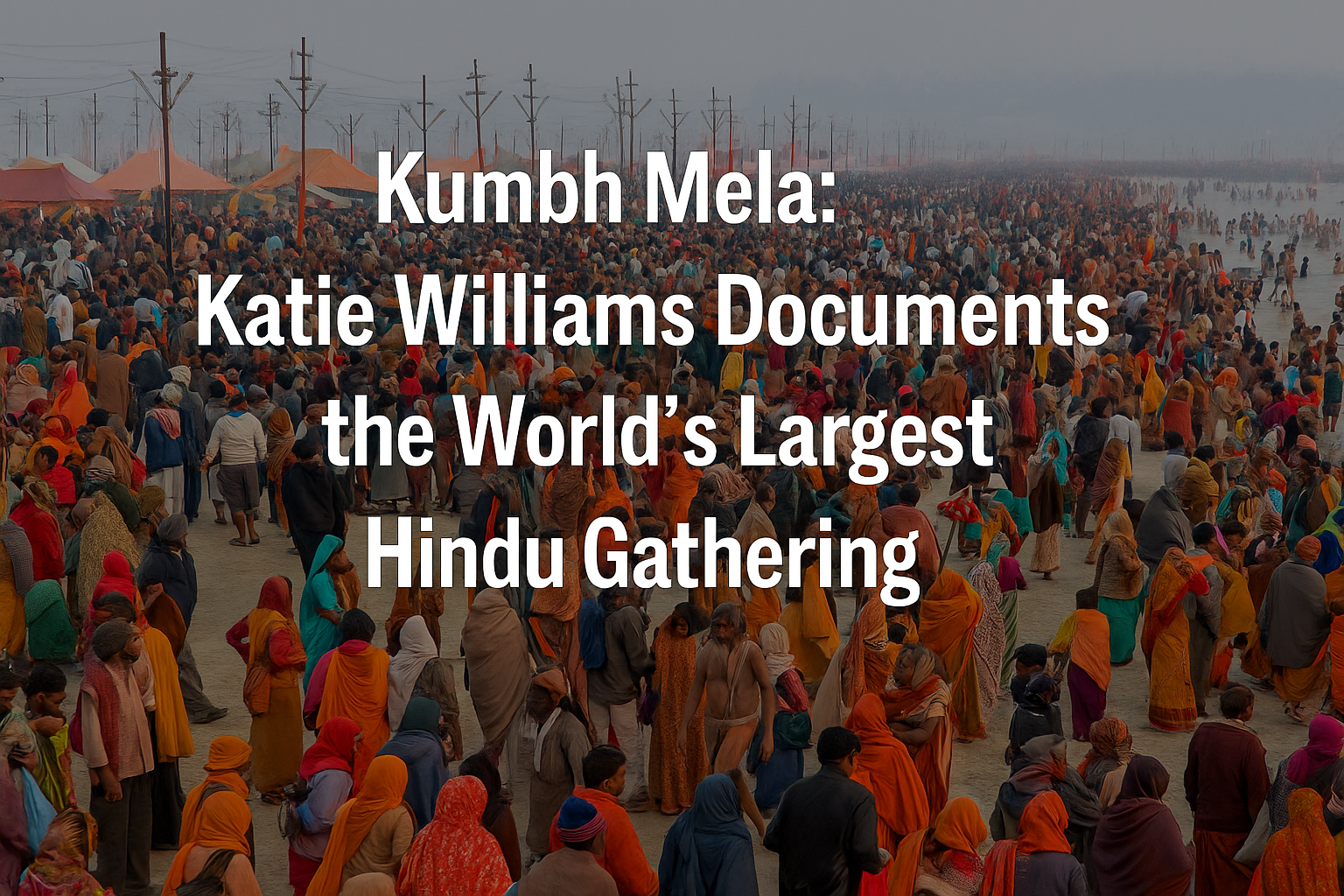With a deep interest in the intersection of culture, spirituality, and tradition, travel enthusiast Katie Williams brings together insights from ancient texts, documentaries, and digital archives to explore places and events of profound significance. In her latest adventure, she turns her attention to the Kumbh Mela – a pilgrimage so vast in scale and sacred in meaning that it transcends the boundaries of religion, geography, and seemingly time itself.
The Origins of Kumbh Mela
Rooted deeply in the history of Hinduism, the origins of the Kumbh Mela can be traced to a cosmic battle between the devas (gods) and asuras (demons) over the nectar of immortality, known as Amrit. According to the Bhagavata Purana, Vishnu Purana, and the Mahabharat, during this celestial struggle, a few drops of the sacred nectar fell at four places on Earth: Prayagraj, Haridwar, Ujjain, and Nashik. These four cities became the rotational sites of the Kumbh Mela.
The Kumbh Mela has been celebrated for centuries. Some scholars estimate that it dates back to 3464 BC. It is held every 12 years at each site. The event is further divided into the Ardha Kumbh Mela (every 6 years) and the extremely rare Maha Kumbh Mela, which occurs once every 144 years. This rotation follows precise astrological alignments, believed to enhance the spiritual benefits of participating in the pilgrimage.
A Gathering Beyond Imagination
Recognized by UNESCO as an Intangible Cultural Heritage of Humanity, the Kumbh Mela is frequently described as the largest peaceful human gathering on Earth. During the 2019 edition held in Prayagraj, over 240 million people are reported to have participated over 49 days – an astonishing number that reflects both religious fervor and social coordination.
At the heart of the Mela is the ritual holy dip in the sacred rivers – Ganga, Yamuna, and Saraswati – believed to wash away sins and aid in attaining moksha, or liberation from the cycle of rebirth.
A Spiritual and Social Experience
Kumbh Mela is not only a religious gathering but also a microcosm of Indian society. Sadhus (renunciates/Holy men), naga babas (Hindu sages), pilgrims, scholars, tourists, and spiritual seekers all converge to experience its sanctity. Massive temporary cities spring up during the event, equipped with housing, sanitation, security, and community kitchens.
The sense of communal unity is particularly striking. People from vastly different regions, languages, and walks of life live side by side in an atmosphere of devotion and discipline. Spiritual discourses, bhajans (devotional songs praising God), yoga workshops, and philosophical debates create an extraordinary experience for attendees.
Symbolism and Significance
For followers of Hinduism, the Kumbh Mela is not merely a ritual, it is a symbol of spiritual renewal. Taking the holy dip signifies letting go of past sins and embracing a path toward enlightenment. It is also a space where generations come together, sharing age-old teachings and absorbing the diversity of Hindu thought and tradition.
The festival underscores the core Hindu belief in cyclical time, rebirth, and liberation. It’s a blend of ancient scriptures, astrology, oral traditions, and community participation that brings the festival to life every cycle.
Final Thoughts
Though she hasn’t experienced it in person, Katie Williams has captured the depth and magnitude of the Kumbh Mela through meticulous study. Her research acts as a window into one of the world’s most spiritually significant events, helping readers understand why millions gather in faith, year after year, to take part in this sacred ritual of unity, purity, and transcendence.
